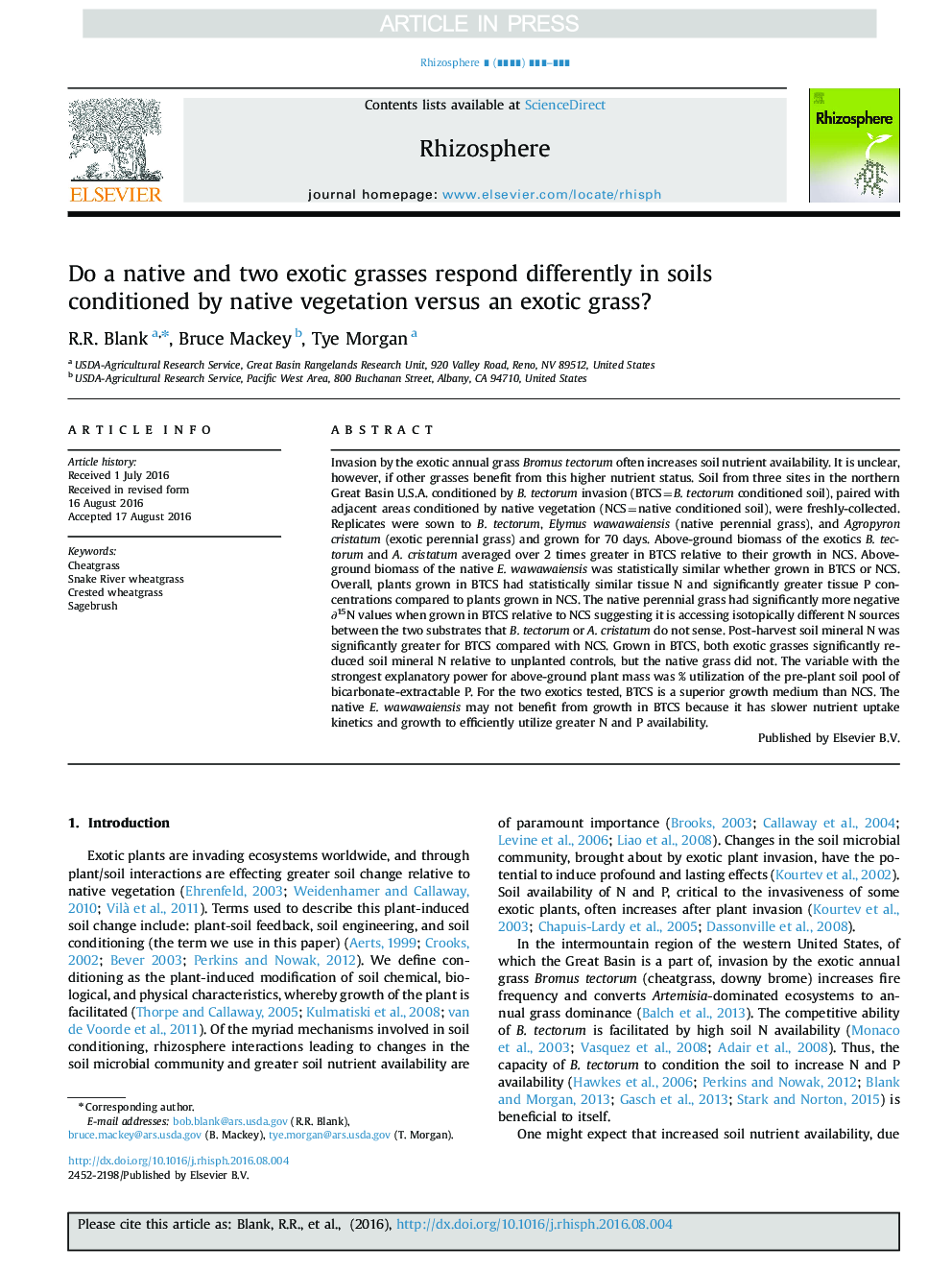| کد مقاله | کد نشریه | سال انتشار | مقاله انگلیسی | نسخه تمام متن |
|---|---|---|---|---|
| 5762835 | 1625041 | 2016 | 10 صفحه PDF | دانلود رایگان |
عنوان انگلیسی مقاله ISI
Do a native and two exotic grasses respond differently in soils conditioned by native vegetation versus an exotic grass?
ترجمه فارسی عنوان
آیا گیاهان بومی و دو گیاه عجیب و غریب در خاکهایی که گیاهان بومی در برابر چمن های عجیب و غریب بوجود می آیند متفاوت است؟
دانلود مقاله + سفارش ترجمه
دانلود مقاله ISI انگلیسی
رایگان برای ایرانیان
موضوعات مرتبط
علوم زیستی و بیوفناوری
علوم کشاورزی و بیولوژیک
علوم زراعت و اصلاح نباتات
چکیده انگلیسی
Invasion by the exotic annual grass Bromus tectorum often increases soil nutrient availability. It is unclear, however, if other grasses benefit from this higher nutrient status. Soil from three sites in the northern Great Basin U.S.A. conditioned by B. tectorum invasion (BTCS=B. tectorum conditioned soil), paired with adjacent areas conditioned by native vegetation (NCS=native conditioned soil), were freshly-collected. Replicates were sown to B. tectorum, Elymus wawawaiensis (native perennial grass), and Agropyron cristatum (exotic perennial grass) and grown for 70 days. Above-ground biomass of the exotics B. tectorum and A. cristatum averaged over 2 times greater in BTCS relative to their growth in NCS. Above-ground biomass of the native E. wawawaiensis was statistically similar whether grown in BTCS or NCS. Overall, plants grown in BTCS had statistically similar tissue N and significantly greater tissue P concentrations compared to plants grown in NCS. The native perennial grass had significantly more negative â15N values when grown in BTCS relative to NCS suggesting it is accessing isotopically different N sources between the two substrates that B. tectorum or A. cristatum do not sense. Post-harvest soil mineral N was significantly greater for BTCS compared with NCS. Grown in BTCS, both exotic grasses significantly reduced soil mineral N relative to unplanted controls, but the native grass did not. The variable with the strongest explanatory power for above-ground plant mass was % utilization of the pre-plant soil pool of bicarbonate-extractable P. For the two exotics tested, BTCS is a superior growth medium than NCS. The native E. wawawaiensis may not benefit from growth in BTCS because it has slower nutrient uptake kinetics and growth to efficiently utilize greater N and P availability.
ناشر
Database: Elsevier - ScienceDirect (ساینس دایرکت)
Journal: Rhizosphere - Volume 2, December 2016, Pages 38-47
Journal: Rhizosphere - Volume 2, December 2016, Pages 38-47
نویسندگان
R.R. Blank, Bruce Mackey, Tye Morgan,
